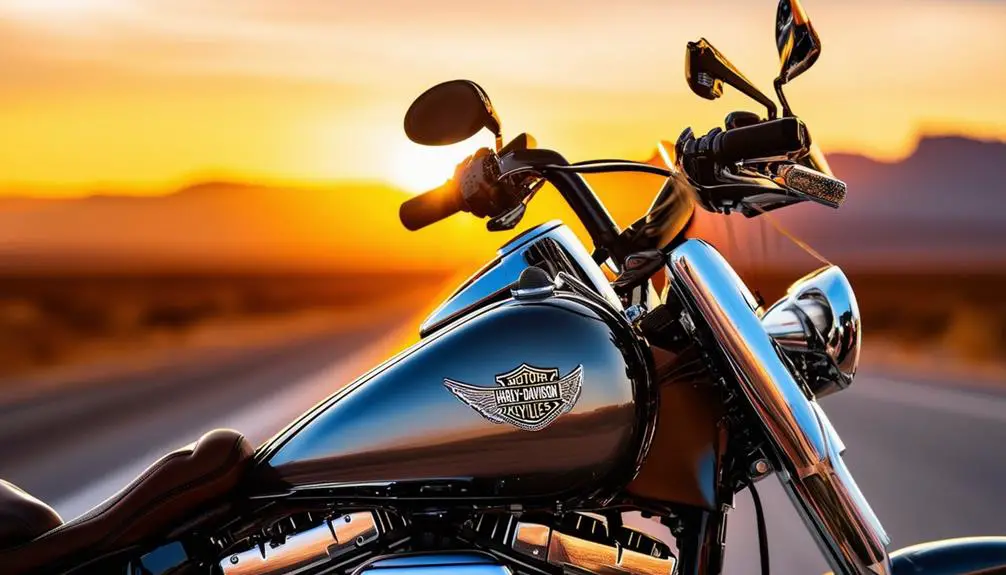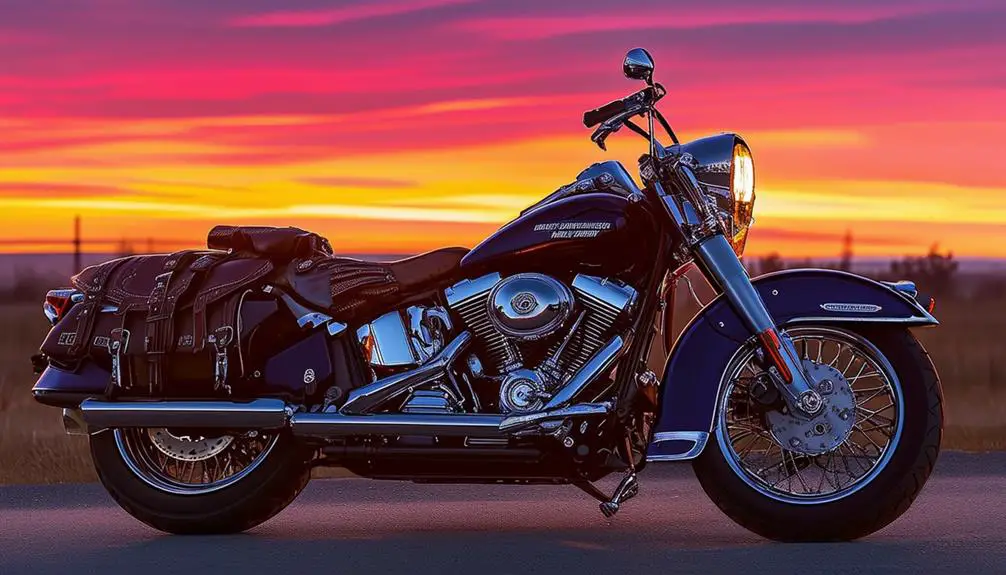Excessive vibration on a Harley Davidson motorcycle is a concern that many riders have experienced. Whether you own a seasoned Road Glide or a modern Ultra Classic, understanding the nuances of your Harley’s vibrations can be the difference between a smooth ride and a troublesome journey.
Motorcycles naturally vibrate due to the internal combustion engine’s workings; however, the intensity should never be discomforting or distractingly excessive.
Identifying and isolating the reasons behind undue shaking is crucial because it not only affects rider comfort but can also indicate underlying mechanical issues that may need attention. It’s important to distinguish between common vibrations that come with the territory of riding a Harley and those that signal a problem. From engine alignment issues to worn-out engine mounts or misaligned wheels, there are various possible sources of excessive vibration that may need diagnosing. But what should you know, and really – where do you start? Let’s talk about it!
Key Takeaways
- Vibration in Harley Davidson bikes is expected to a degree, but should not be excessive.
- Excessive vibration can stem from a variety of mechanical issues, requiring thorough diagnosis.
- Proper maintenance and addressing vibration problems enhance overall ride comfort and bike performance.
Understanding Motorcycle Vibrations
In your journey as a motorcyclist, especially if you ride Harley-Davidson bikes, understanding the nature of vibrations can greatly enhance your riding experience. Let’s explore what contributes to these sensations.
Types of Vibrations
Motorcycles typically exhibit two types of vibrations: primary and secondary. Primary vibrations are inherent to the engine’s operation, stemming directly from the pistons moving up and down within the cylinders. Secondary vibrations, on the other hand, are the result of the engine’s movement being transferred to the motorcycle’s frame.
- Primary Vibrations: Direct result of piston movement.
- Secondary Vibrations: Transferred from engine to frame.
Harley Engine Design and Vibration
Your Harley’s distinctive rumble largely comes from its V-twin engine design. This layout features two cylinders in a “V” arrangement, contributing to a unique engine vibration. Earlier Harley models had engines that were rigidly mounted to the frame, amplifying these vibrations. To address this, rubber mounts were introduced to dampen the vibration felt by you, the rider, particularly in models post-2004 and in the Milwaukee-Eight engines.
- Rigid Mounts: Pre-2004 models; more vibration transfer.
- Rubber Mounts: Post-2004 and Milwaukee-Eight engines; reduced vibration felt by rider.
Read next: Finding The Best Harley Compensator Upgrades Available Today
Impact of Engine Configuration on Vibration
The configuration of an engine significantly impacts vibration levels. Harleys vibrate more than most motorcycles due to the larger displacement and fewer cylinders of V-twin engines. These engines run at lower RPM ranges but with higher torque, which contributes to the characteristic vibrations. A smoother experience can sometimes be felt at cruising speeds where the opposing pistons effectively balance each other out.
- Engine Displacement: Larger in Harleys, contributing to more vibration.
- RPM Range: Lower in V-twin engines, affects vibration intensity.
In your Harley, vibrations are a part of its character — from the feel in the handlebars to the seat — and understanding where they come from helps you to appreciate the intricate dance between machine and rider.
Diagnosing Excessive Vibration Sources
When your Harley Davidson starts shaking more than usual, it’s crucial to pinpoint the source. Here’s how you can diagnose excessive vibration issues.
Engine and Crank Issues
Excessive vibration often stems from the engine, particularly the crankshaft. This could be due to misalignment or crankshaft runout, where the crankshaft deviates from its central axis. If you feel a persistent shake, especially at higher speeds, it might be time to check the crankshaft for true and runout with a dial indicator.
Primary Chain Complications
Issues with the primary chain are another common culprit. The chain should be well-lubricated and properly aligned. Check for:
- Worn or tight links
- Incorrect tension, which can be adjusted with the primary chain tensioner
- Damage or malalignment
Improper tension or alignment can transfer irregular loads to the drivetrain, amplifying vibrations.
Tire and Wheel Imbalances
Wheels and tires play a significant role in your ride’s stability. An “out of balance” condition will lead to noticeable vibrations, particularly at specific speeds. To diagnose, inspect for:
- Uneven tire wear
- Damage to the wheel or tire
- Correct tire balance, which can be resolved with wheel weights
Correcting imbalances is essential for a smooth ride.
Poorly Mounted Components
Lastly, check your bike’s mounting points. Loose bolts and worn motor mounts might just be the source of excessive shaking. Ensure all components are securely fastened and mounts are in good condition. Replace any mounts that show signs of damage or wear to mitigate unwanted movement.
content continues below
Quick Navigation for Related Problems
-
Harley Davidson Oil Leaks: Quick Fixes for a Sealed Ride
-
Harley Davidson Excessive Vibration: Tips to Smooth It Out
-
Harley Engine Knocking Sound: Causes and Fixes
-
4 Most Annoying Harley Davidson Throttle by Wire Problems
-
5 Harley Davidson Overheating Problems That Ruin Your Ride
-
3 Harley Davidson Brake Light Switch Problems To Be Aware Of
-
Total Harley Davidson Starter Problems Troubleshooting Guide
-
Harley Davidson Speedometer Not Working: Tips, Tricks & More
-
Harley Oil Breather Problems: Quick Tips, Tricks & More
-
Harley Oil Sumping Fix: Quick Solutions for a Smooth Ride
-
Harley Davidson ABS Light Flashing: Tips, Fixes, and More
-
Harley Davidson BCM Problems: Navigating Common Issues
-
Is Your Harley Clicking When Trying to Start? Help’s Here!
-
Harley Davidson Fuel Pump Problems: Tips, Tricks & More
-
3 Harley Davidson Fuel Injection Problems To Be Wary Of
-
Harley Bad Compensator Symptoms: Recognizing Early Signs
-
6 Reasons Why Your Harley Has Power but Won’t Start
-
Your Harley Lost All Electrical Power? Here’s What To Do
-
3 Harley Davidson Transmission Problems That Shift Your Mood
-
4 Harley Hydraulic Clutch Problems, Their Causes and Fixes
content resumes
Vibration Reduction Techniques
Your Harley Davidson’s smooth ride can sometimes be disrupted by excessive vibration. By addressing the mounting, balancing key components, choosing the right tires, and maintaining the exhaust system, you can significantly reduce these vibrations.
Engine Mount and Rubber Mount Upgrades
If you’re feeling too much vibration coming through your handlebars, footboards, and seat, it’s time to check your engine mounts. Upgrading to high-quality rubber mounts can absorb more vibration, giving you a smoother ride. Ensure that both front and rear mounts are in good condition and properly tightened.
Balancing Primary Chain and Cranks
Balancing the primary chain is critical as an improperly tensioned chain can cause vibrations. Adjust the tension according to your service manual’s specifications. Additionally, have your cranks professionally balanced if you suspect an imbalance, as this could be a hidden source of vibration.
Choosing the Right Tires
The tires on your Harley are the only contact between you and the road, so their condition is crucial. Ensure they are properly inflated and the tread is not worn out. Choosing tires designed for reduced vibration can lead to a noticeable improvement in ride quality.
Enhancing Exhaust System Integrity
A secure and well-maintained exhaust system can reduce excess noise and vibration. Ensure all components are tightly fastened and that there are no leaks or loose parts. A stable exhaust system complements the overall vibration reduction of your motorcycle.
Additional Considerations
In addressing excessive vibration issues with your Harley Davidson, it’s essential to consider the impact of aftermarket modifications and the significance of routine maintenance. These factors greatly influence the ride quality and longevity of your bike.
Effects of Aftermarket Modifications
When you add aftermarket parts, such as an aftermarket exhaust or windshield, it can alter your motorcycle’s dynamics. This can sometimes lead to increased vibration. For instance:
- Exhaust: Aftermarket exhaust systems can change back pressure, which may have an unintended effect on engine vibration. Make sure hangers and mounting points are secure to avoid additional rattles.
- Windshield: If not properly fitted, an aftermarket windshield can cause aerodynamic changes and as a result, perceptible shaking at higher speeds.
Importance of Regular Checks and Balances
Your Harley’s equilibrium depends on well-maintained systems. Regular checks can help identify and correct issues causing excessive vibration:
- Idle and Timing: Verify that your idle speed is set correctly and that ignition timing is precise.
- Oil: Always use the recommended grade of oil to ensure proper lubrication.
- Electrical Components: Inspect the coil and other electrical components for wear or damage.
- Mounts: Check engine and transmission mounts for degradation; they are critical in reducing vibration.
Frequently Asked Questions
When you’re dealing with vibrations on your Harley Davidson, understanding the cause and solution can significantly improve your riding experience. Below are some key FAQs to address common issues and fixes related to motorcycle vibrations.
What can be done to reduce vibration when my Harley Davidson is idling?
To reduce vibration at idle, check and adjust your engine mounts, as they are critical in minimizing engine vibrations. Ensuring they’re not worn out and are properly aligned can make a noticeable difference.
How can I address excessive vibration on my Harley Davidson during acceleration?
During acceleration, excessive vibration can often be remedied by ensuring your motor and transmission mounts are in good condition. Also, verify that all the bolts and fixings are tightened to their correct torque settings.
What are common reasons for a motorcycle engine, like a Harley Davidson, to have excessive vibration while driving?
Common causes of excessive vibration include worn out engine mounts, misaligned wheels and tires, or issues with the primary chain. Regular inspections can help identify and correct these problems early.
Is there a way to fix vibrations that occur in all riding conditions on a Harley Davidson motorbike?
Yes, check the overall alignment of your engine and transmission, and inspect wheel balance and tire condition. Maintenance and timely replacements can often resolve vibrations in most riding conditions.
What maintenance tips can help prevent excessive vibration in a Harley Davidson?
Preventive maintenance, such as regular checks of the engine mounts, wheel bearings, and the primary drive for proper lubrication and alignment, can help prevent excessive vibration.
Could imbalance be a reason for my Harley Davidson vibrating more than usual, and how would I correct it?
Imbalance in the wheels or drive system can cause your Harley to vibrate more than usual. Ensuring your wheels are balanced and your bike is properly aligned can correct this issue.








Leave a Reply
You must be logged in to post a comment.